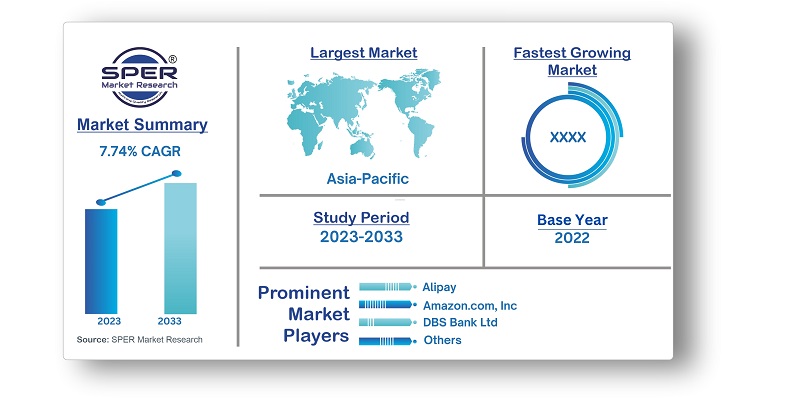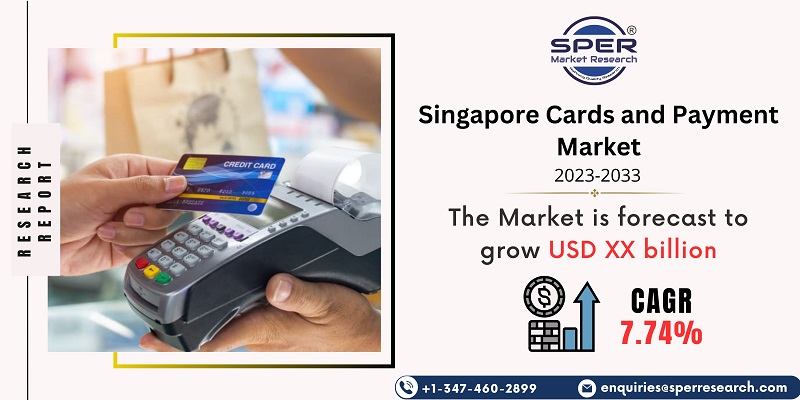
Singapore Cards and Payment Market Growth, Size, Trends, Demand, Revenue and Future Outlook
Singapore Cards and Payment Market Size- By Mode of Payment, By End User- Regional Outlook, Competitive Strategies and Segment Forecast to 2033
| Published: Sep-2023 | Report ID: IACT23164 | Pages: 1 - 102 | Formats*: |
| Category : Information & Communications Technology | |||
- September 2021: Fave, a smart payment app, has joined with Google Pay so that users of Google Pay can scan any FavePay SGQR and receive up to 20% cashback at 15,000 food and beverage establishments and stores, including Subway, Food Republic, Food Junction, BreadTalk, Puma, and others, by using their Google Pay account.
- May 2021 - The leading digital wallet in Southeast Asia, GrabPay, has announced a partnership with Stripe, a global technology company that builds the foundation for the internet economy. Due to the arrangement, businesses all around Southeast Asia, starting in Singapore and Malaysia, will be able to provide customers with a more advantageous and straightforward online payment solution through the GrabPay Wallet.


| Report Metric | Details |
| Market size available for years | 2019-2033 |
| Base year considered | 2022 |
| Forecast period | 2023-2033 |
| Segments covered | By Mode of Payment, By End User |
| Regions covered | Eastern Region, Southern Region, Western Region, Northern Region |
| Companies Covered | Alipay, Amazon.com, Inc., Apple Inc., DBS Bank Ltd, Fave, Google Pay, Grab, PayPal Holdings, Inc., Samsung and others |
- Consumers
- Merchants and Businesses
- Financial Institutions
- Fintech Companies
- Government and Regulatory Bodies
- Investors and Shareholders
- International Businesses
- Tourists and Travelers
| By Mode of Payment: |
|
| By End User: |
|
- Singapore Cards and Payment Market Size (FY’2023-FY’2033)
- Overview of Singapore Cards and Payment Market
- Segmentation of Singapore Cards and Payment Market By Mode of Payment (Point of Sale, Online Store)
- Segmentation of Singapore Cards and Payment Market By End User (Retail, Entertainment, Healthcare, Hospitality, Others)
- Statistical Snap of Singapore Cards and Payment Market
- Expansion Analysis of Singapore Cards and Payment Market
- Problems and Obstacles in Singapore Cards and Payment Market
- Competitive Landscape in the Singapore Cards and Payment Market
- Impact of COVID-19 and Demonetization on Singapore Cards and Payment Market
- Details on Current Investment in Singapore Cards and Payment Market
- Competitive Analysis of Singapore Cards and Payment Market
- Prominent Players in the Singapore Cards and Payment Market
- SWOT Analysis of Singapore Cards and Payment Market
- Singapore Cards and Payment Market Future Outlook and Projections (FY’2023-FY’2033)
- Recommendations from Analyst
1.1. Scope of the report1.2. Market segment analysis
2.1. Research data source2.1.1. Secondary Data2.1.2. Primary Data2.1.3. SPER’s internal database2.1.4. Premium insight from KOL’s2.2. Market size estimation2.2.1. Top-down and Bottom-up approach2.3. Data triangulation
4.1. Driver, Restraint, Opportunity and Challenges analysis4.1.1. Drivers4.1.2. Restraints4.1.3. Opportunities4.1.4. Challenges4.2. COVID-19 Impacts of the Singapore Cards and Payment Market
5.1. SWOT Analysis5.1.1. Strengths5.1.2. Weaknesses5.1.3. Opportunities5.1.4. Threats5.2. PESTEL Analysis5.2.1. Political Landscape5.2.2. Economic Landscape5.2.3. Social Landscape5.2.4. Technological Landscape5.2.5. Environmental Landscape5.2.6. Legal Landscape5.3. PORTER’s Five Forces5.3.1. Bargaining power of suppliers5.3.2. Bargaining power of buyers5.3.3. Threat of Substitute5.3.4. Threat of new entrant5.3.5. Competitive rivalry5.4. Heat Map Analysis
6.1. Singapore Cards and Payment Market Manufacturing Base Distribution, Sales Area, Product Type6.2. Mergers & Acquisitions, Partnerships, Product Launch, and Collaboration in Singapore Cards and Payment Market
7.1. Singapore Cards and Payment Market Value Share and Forecast, By Mode of Payment, 2023-20337.2. Point of Sale7.2.1. Card Payments (Debit Cards, Credit Cards, Bank Financing, Prepaid Cards)7.2.2. Digital Wallet (Mobile Wallets)7.3. Online Store7.3.1. Cards Payments7.3.2. Digital Wallet7.3.3. Others
8.1. Singapore Cards and Payment Market Value Share and Forecast, By End User, 2023-20338.2. Retail8.3. Entertainment8.4. Healthcare8.5. Hospitality8.6. Others
9.1. Singapore Cards and Payment Market Size and Market Share
10.1. Singapore Cards and Payment Market Size and Market Share By Mode of Payment (2019-2026)10.2. Singapore Cards and Payment Market Size and Market Share By Mode of Payment (2027-2033)
11.1. Singapore Cards and Payment Market Size and Market Share By End User (2019-2026)11.2. Singapore Cards and Payment Market Size and Market Share By End User (2027-2033)
12.1. Singapore Cards and Payment Market Size and Market Share By Region (2019-2026)12.2. Singapore Cards and Payment Market Size and Market Share By Region (2027-2033)12.3. Eastern Region12.4. Southern Region12.5. Western Region12.6. Norther Region
13.1. Alipay13.1.1. Company details13.1.2. Financial outlook13.1.3. Product summary13.1.4. Recent developments13.2. Amazon.com, Inc.13.2.1. Company details13.2.2. Financial outlook13.2.3. Product summary13.2.4. Recent developments13.3. Apple Inc.13.3.1. Company details13.3.2. Financial outlook13.3.3. Product summary13.3.4. Recent developments13.4. DBS Bank Ltd13.4.1. Company details13.4.2. Financial outlook13.4.3. Product summary13.4.4. Recent developments13.5. Fave13.5.1. Company details13.5.2. Financial outlook13.5.3. Product summary13.5.4. Recent developments13.6. Google Pay13.6.1. Company details13.6.2. Financial outlook13.6.3. Product summary13.6.4. Recent developments13.7. Grab13.7.1. Company details13.7.2. Financial outlook13.7.3. Product summary13.7.4. Recent developments13.8. PayPal Holdings, Inc.13.8.1. Company details13.8.2. Financial outlook13.8.3. Product summary13.8.4. Recent developments13.9. Samsung13.9.1. Company details13.9.2. Financial outlook13.9.3. Product summary13.9.4. Recent developments13.10. Others
SPER Market Research’s methodology uses great emphasis on primary research to ensure that the market intelligence insights are up to date, reliable and accurate. Primary interviews are done with players involved in each phase of a supply chain to analyze the market forecasting. The secondary research method is used to help you fully understand how the future markets and the spending patterns look likes.
The report is based on in-depth qualitative and quantitative analysis of the Product Market. The quantitative analysis involves the application of various projection and sampling techniques. The qualitative analysis involves primary interviews, surveys, and vendor briefings. The data gathered as a result of these processes are validated through experts opinion. Our research methodology entails an ideal mixture of primary and secondary initiatives.



Frequently Asked Questions About This Report
PLACE AN ORDER
Year End Discount
Sample Report
Pre-Purchase Inquiry
NEED CUSTOMIZATION?
Request CustomizationCALL OR EMAIL US
100% Secure Payment






Related Reports
Our Global Clients
Our data-driven insights have influenced the strategy of 200+ reputed companies across the globe.




















